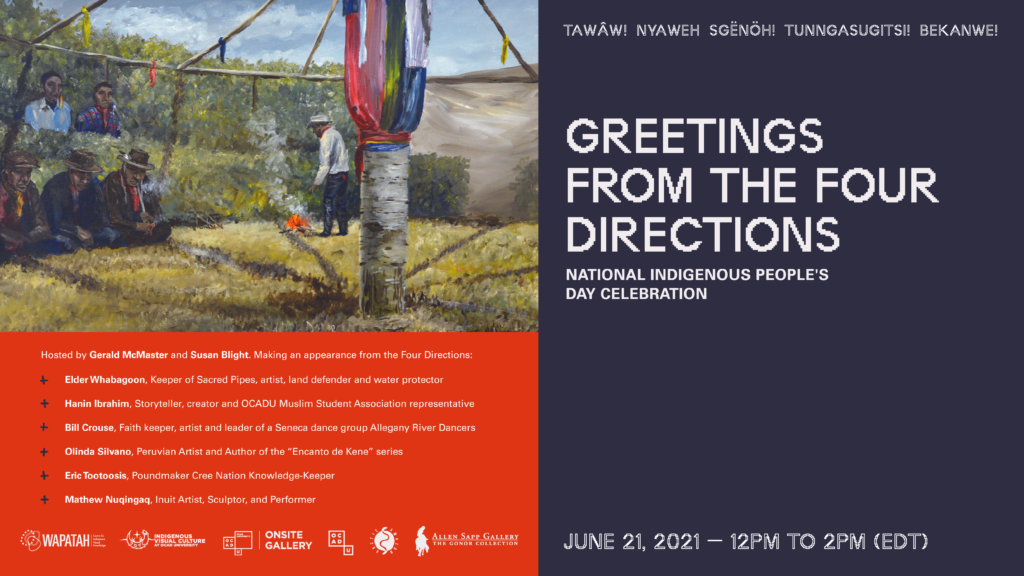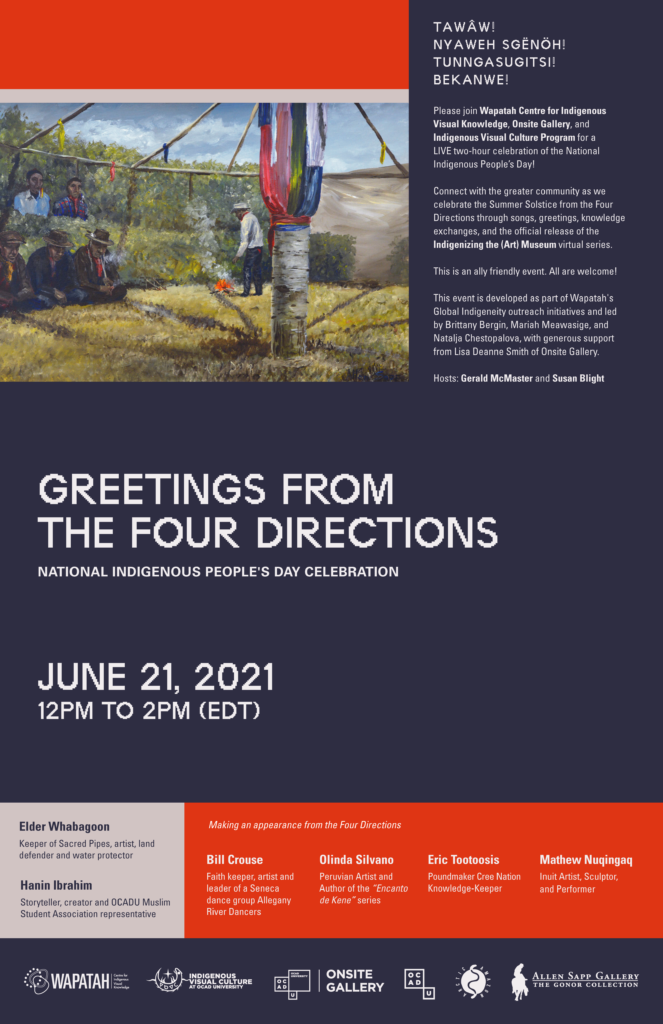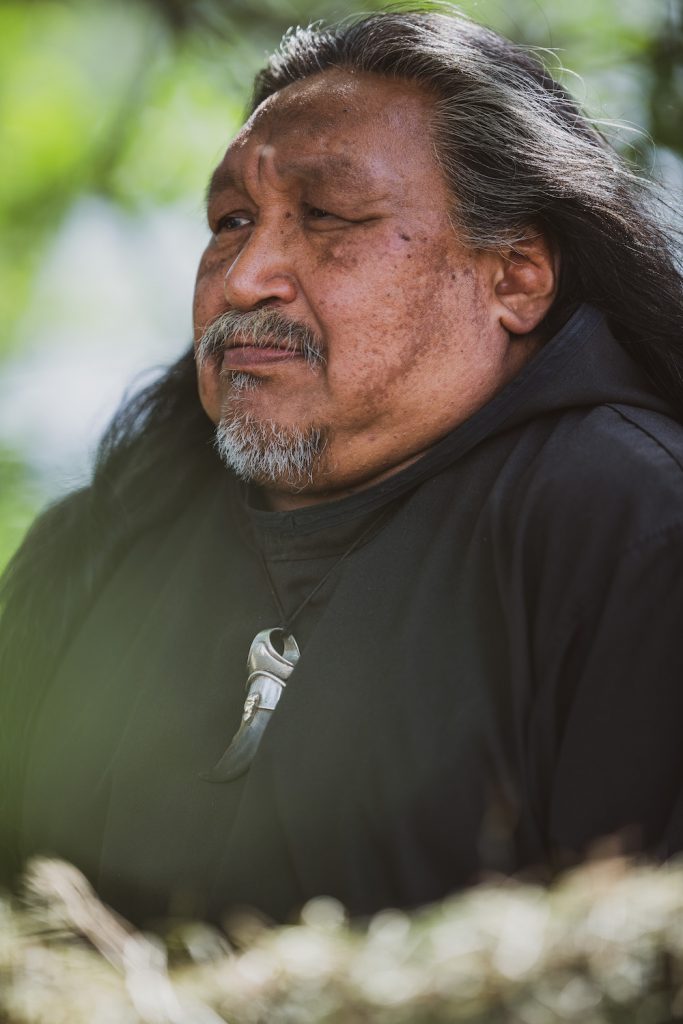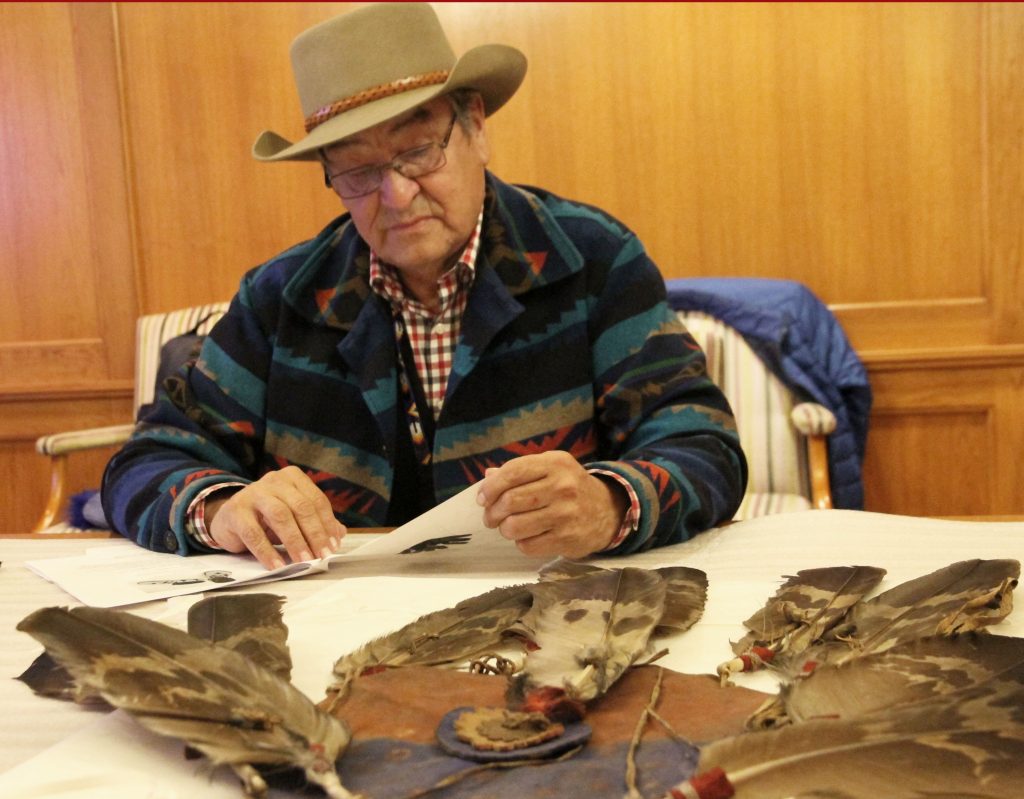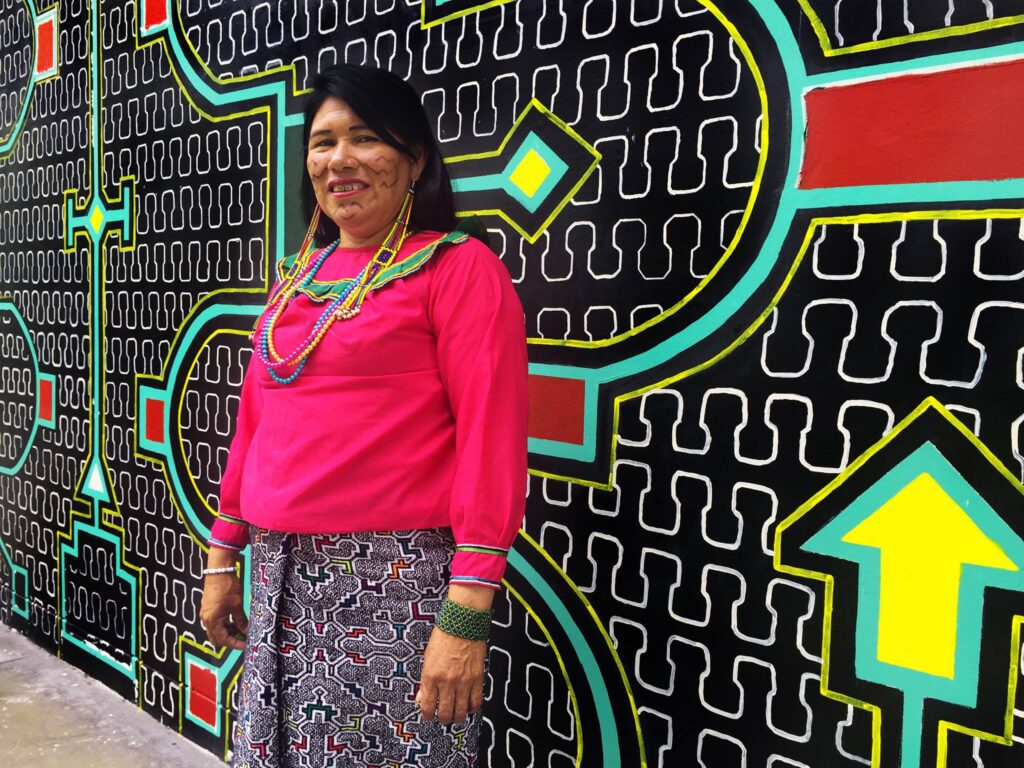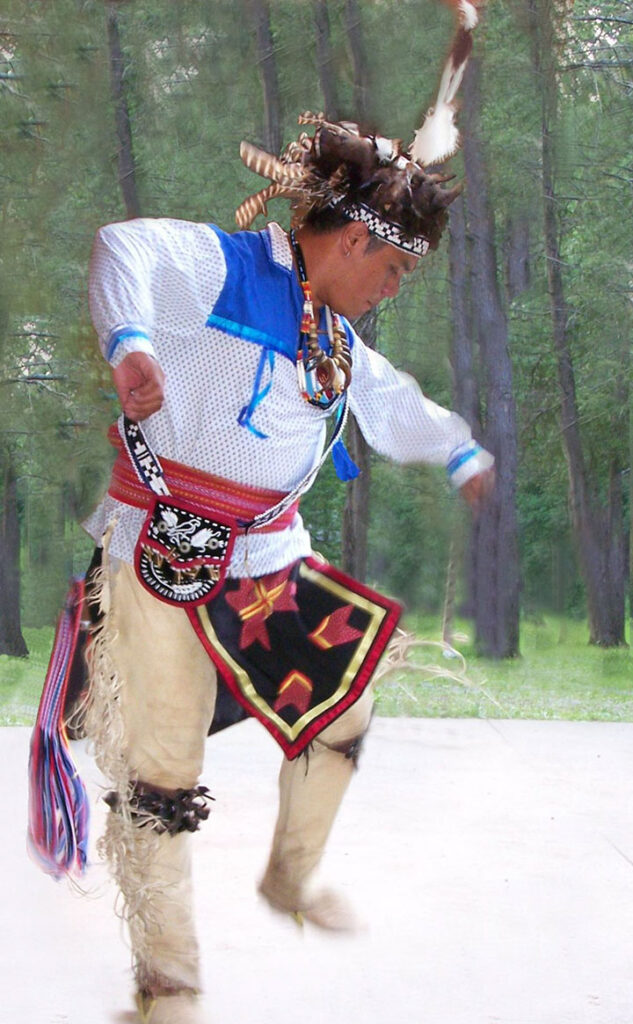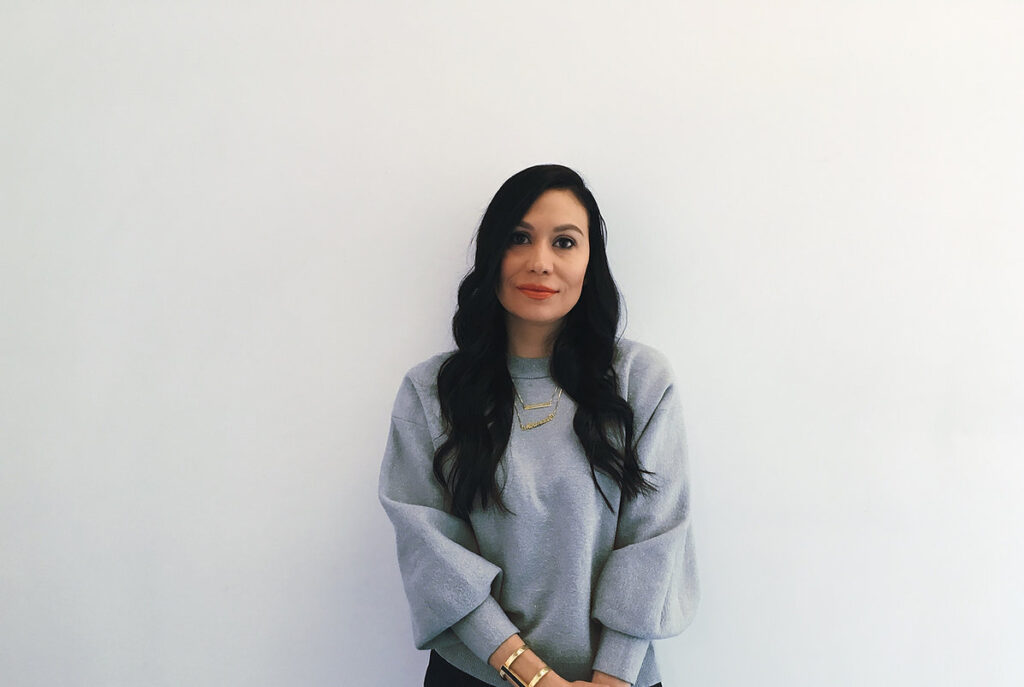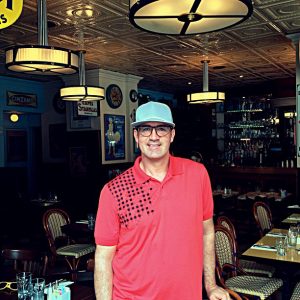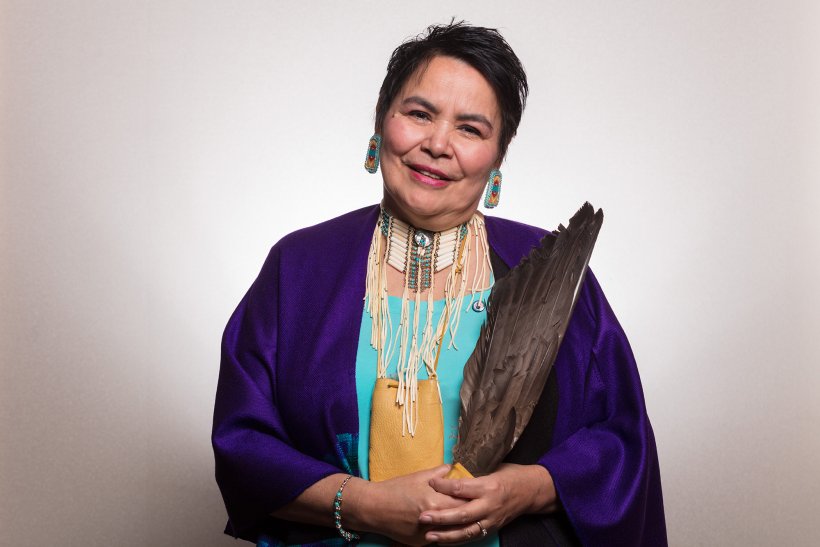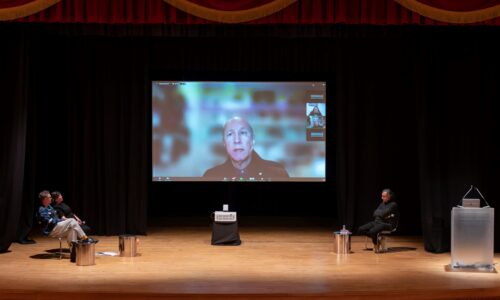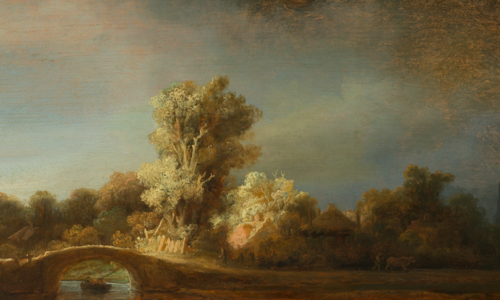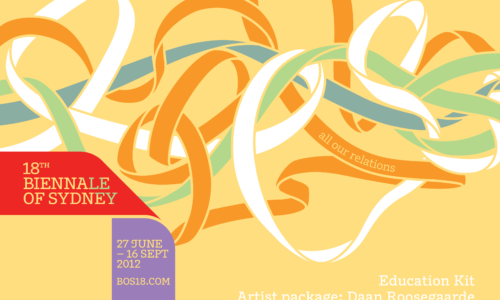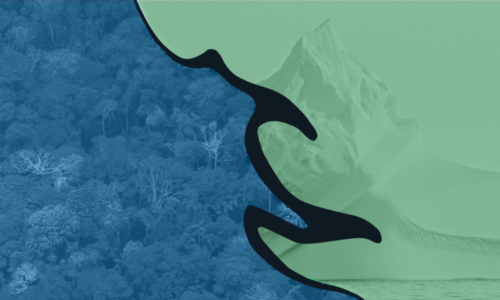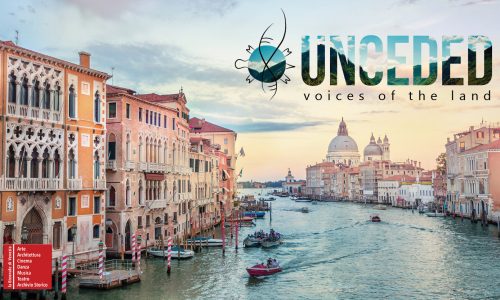Greetings from the Four Directions: National Indigenous People’s Day Celebration.
Tawâw! Nyaweh Sgënöh! Tunngasugitsi! Bekanwe!
In partnership with Onsite Gallery and the Indigenous Visual Culture Program at OCADU, Wapatah Centre for Indigenous Visual Knowledge co-hosted a LIVE 2-hour celebration of National Indigenous People’s Day on Monday June 21, 2021. Starting in the East, this exciting virtual celebration of National Indigenous People’s Day featured a series of LIVE and pre-recorded greetings, songs, and knowledge exchanges. Marking the close of the Spring chapter of the Indigenizing the (Art) Museum project, Wapatah Centre and Onsite Gallery officially released the series as a single set of in-conversation lectures available to watch on YouTube. With contributions from the Allen Sapp Gallery and the generous support from OCADU President Ana Serrano, this virtual celebration was broadcasted live on YouTube.
OVERVIEW OF THE EVENT
Monday, June 21st at 12:00PM (EDT)
Wapatah Centre for Indigenous Visual Knowledge, Onsite Gallery and the Indigenous Visual Culture Program hosted a LIVE two-hour celebration of National Indigenous People’s Day on Monday June 21st! With performances from the Great Lakes to the Great Plains, the Northern Arctic to the Southern Amazon, the OCADU community honoured the Summer Solstice and Festival of the Sun. Greetings from the 4 Directions was a free and ally friendly event.
On behalf of the OCADU Muslim Student Association, Hanin Ibrahim opened the event by offering a land acknowledgement.
Greetings from the 4 Directions was developed as part of Wapatah’s Global Indigeneity outreach initiatives and led by Brittany Pitseolak Bergin, Mariah Meawasige, and Natalja Chestopalova, with generous support from Lisa Deanne Smith of Onsite Gallery.
FEATURED GUESTS
Mathew Nuqingaq
Mathew Nuqingaq works in jewelry, sculpture, performance, and photography. He grew up in Qikiqtarjuaq (Broughton Island) and attended Arctic College in Iqaluit where he now lives and works. Best known for his jewelry pieces which incorporate traditional Inuit iconography executed in non-traditional materials, his work has been featured in major exhibitions and collections on both a national and international scale. He is a co-founder of the Nunavut Arts and Crafts Association and the founder of Aayuraa Studio in Iqaluit. As well, he has served as the President of the Inuit Art Foundation and is a member of the Order of Canada. In addition to his honours and achievements in the visual arts, Nuqingaq is a talented drum dancer who has performed in international festivals and celebrations around the world.
Mathew Nuqingaq
Mathew Nuqingaq works in jewelry, sculpture, performance, and photography. He...
Eric Tootoosis
Eric Tootoosis is a renowned Plains Cree/Nakoda traditional Knowledge Keeper from Poundmaker Cree Nation. For decades, he has worked as a historian and technician of Treaty 6. An original member of the Drums of Poundmaker Singers, he performed across North America and overseas throughout the 1970’s and early 80’s. Today, as one of the chairs of the Treaties 1–11 Council, his work continues towards the preservation, protection, and perpetuation of the Treaties to a new generation of Indigenous peoples and the Canadian public. As the leader of the Poundmaker Cree Nation’s Macanisak Oskapew Warrior Society, he upholds the commitment to serving his community and the Battle River Plains Cree Nations in ceremonial gatherings and events.
Eric Tootoosis
Eric Tootoosis is a renowned Plains Cree/Nakoda traditional Knowledge Keeper...
Olinda Silvano
Olinda Silvano, a Shipibo-konibo artist, uses geometric Shipibo weaving designs to create large works of public art. At birth, her grandfather (the shaman), through the vision of Ayahuasca, gave her an invisible crown of knowledge of kené designs, typical of Shipibo-Konibo art forms. Under the tutelage of her grandmother, Silvano learned to weave textiles featuring the bold, geometric, and maze-like kené that she saw on each leaf, tree, and on the ground. She continues this tradition along with a collective referred to as Las Madres Artesanas (the Artisan Mothers), transforming Shipibo designs into massive works of public art. Today Olinda is recognized by the Ministry of Culture, the Congress of the Republic of Peru, the Ministry of Women, the National University of San Marcos and more.
Olinda Silvano
Olinda Silvano, a Shipibo-konibo artist, uses geometric Shipibo weaving designs...
Bill
Crouse
Bill Crouse is a member of the Hawk Clan of the Seneca Nation, and a Faith keeper of the Coldspring Longhouse on the Allegany Territory. An artist and performer, he is the leader of a Seneca dance group called the Allegany River Dancers who have traveled and performed extensively throughout North America and Europe. His visual expressions concern everything to do with being a Seneca person, intertwined with his commitment to performing and educating people about Iroquois culture. Employed as a Coordinator for the Seneca Language Department on the Allegany Territory, he has also served as a consultant for the American Indian Dance Theater.
Bill
Crouse
Bill Crouse is a member of the Hawk Clan of the...
Susan
Blight
Susan Blight (Anishinaabe, Couchiching First Nation) is an interdisciplinary artist working with public art, site-specific intervention, photography, film and social practice. Her solo and collaborative work engages questions of personal and cultural identity and its relationship to space. In August 2019, Susan joined OCAD University as Delaney Chair in Indigenous Visual Culture and as Assistant Professor in the Faculty of Liberal Arts & Sciences and School of Interdisciplinary Studies.
Susan
Blight
Host
Susan Blight (Anishinaabe, Couchiching First Nation) is an interdisciplinary artist working...
Jason Baerg
Jason Baerg is an Indigenous curator, educator, and visual artist. Curatorial contributions include developing and implementing the national Metis arts program for the Vancouver Olympics. Baerg graduated from Concordia University with a Bachelors of Fine Arts and a Masters of Fine Arts from Rutgers University. He taught at Rutgers University (2014-2016) and served as an adjunct instructor at the Institute of American Indian Arts in Santa Fe, New Mexico (Fall of 2016). Dedicated to community development, he founded and incorporated the Metis Artist Collective and has served as volunteer Chair for such organizations as the Aboriginal Curatorial Collective and the National Indigenous Media Arts Coalition. Creatively as a visual artist, he pushes new boundaries in digital interventions in drawing, painting and new media installation. Recent international solo exhibitions include the Illuminato Festival in Toronto, Canada, the Royal Melbourne Institute of Technology in Australia and the Digital Dome at the Institute of the American Indian Arts in Santa Fe, New Mexico. Jason Baerg has given formal artist talks at such institutions as the Whitecliffe College of Arts & Design, Auckland, New Zealand, New York City’s Parsons School of Design and the University of Toronto. In 2008, Baerg won the Emerging Artist Award for the Premier’s Awards for Excellence in the Arts, granted on behalf of the Ontario Ministry of Culture. He has sat on numerous art juries and won awards through such facilitators as the Canada Council for the Arts, the Ontario Arts Council and The Toronto Arts Council.
Jason Baerg
INVC Facilitator
Jason Baerg is an Indigenous curator, educator, and visual artist....
Elder Whabagoon
Elder Whabagoon, born in Sioux Lookout, Ontario, is a member of the Lac Seul First Nation and she sits with the Loon Clan. Her mother was a residential school survivor, and her grandmother was a medicine woman with Sapay and Petawayway lineage. Whabagoon is a Sixties Scoop survivor. She is active in the Toronto Indigenous community, involved with many Indigenous organizations across Toronto. Whabagoon is a peer assessor on the Indigenous Arts Grants Panel with the Toronto Arts Council and an advisory member of the StART Partnership Program, a City of Toronto program that funds large-scale street art and graffiti projects. She is a Keeper of Sacred Pipes, a speaker, artist, active community member, land defender, and water protector.
Elder Whabagoon
Elder Whabagoon, born in Sioux Lookout, Ontario, is a member of...
Gerald McMaster
Gerald McMaster, O.C., is one of Canada’s most revered and esteemed academics. He is a curator, artist, and author, and is currently professor and Tier 1 Canada Research Chair of Indigenous Visual Culture and Curatorial Practice at OCAD University where he leads a team of researchers at the Wapatah: Centre for Indigenous Visual Knowledge. McMaster served as the curator for the 1995 Venice Biennale, artistic director of the 2012 Biennale of Sydney, and curator for the 2018 Venice Architecture Biennale. He is nêhiyaw (Plains Cree) and a citizen of the Siksika First Nation.
Gerald McMaster
Host
Gerald McMaster, O.C., is one of Canada’s most revered and...
Wapatah Team Contributors
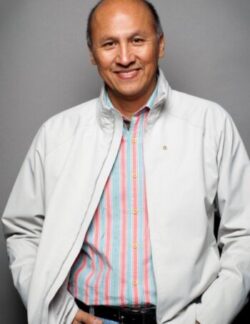 |
Dr. Gerald McMasterDr. McMaster has over 30 years international work and expertise in contemporary art, critical theory, museology and Indigenous aesthetics. His experience as an artist and curator in art and ethnology museums researching and collecting art, as well as producing exhibitions has given him a thorough understanding of transnational Indigenous visual culture and curatorial practice. His early interests concerned the ways in which culturally sensitive objects were displayed in ethnology museums, as well as the lack of representation of Indigenous artists in art museums. As a practicing artist, he offered a way of staging hitherto decontextualized objects different from the traditional formats favoured by exhibition designers trained in Western traditions; instead, his was an approach that rested on Indigenous epistemologies. These early stages in developing an –Indigenous visuality led him to study concepts in visual, experiential and spatial composition. His exhibition Savage Graces (1992) challenged long held views, and played a major role in breaking down conventional barriers around where art should be practiced, while also demonstrating that art is not tied to ethnicity. As a curator, he focused on advancing the intellectual landscape for Indigenous curatorship through the foundational concept of voice. He curated, for example, an exhibition called Indigena (1992) that brought together unfiltered Indigenous voices for the first time. Until then, non-Indigenous scholars had dominated discussions of Indigenous art, history and culture. McMaster made the point that Indigenous artists and writers were more than capable of representing themselves in articulate, eloquent ways. Over the past 20 years, he has continued to refine the idea of voice, leading him to ask: How can Indigenous voices continue providing new perspectives on well-researched subjects such as art, history and anthropology? Throughout his career, his championing of the mainstream value of Indigenous art, among other things, has led to his being chosen to represent Canada at a number of prestigious international events. These include his serving as Canadian Commissioner for the 1995 Venice Biennale, and as artistic director of the 2012 Biennale of Sydney, and curator for the 2018 Venice Architecture Biennale. Dr. Gerald McMasterDirector, Tier 1 Canada Research ChairDr. McMaster has over 30 years international work and expertise... |
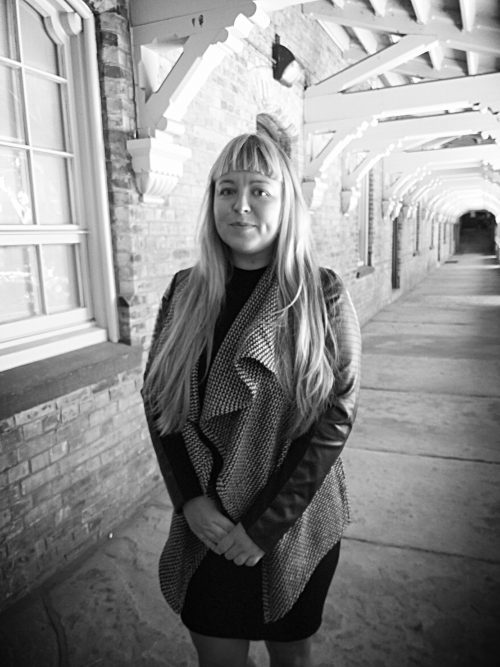 |
Natalja ChestopalovaNatalja Chestopalova is part of the Ph.D. in Communication and Culture Program at York and Ryerson Universities in Toronto. Her research is informed by the study of digital media, archival aesthetics, phenomenology, and psychoanalysis, and focuses on the transformative sensory experience and multimodality in film, graphic novel medium, and theatrical site-specific performances. With the support from the Social Science and Humanities Council of Canada (SSHRC), she has presented at multiple Canadian and International events, including roundtables & panels on new media archives, visual storytelling, and preservation of ephemeral cultural narratives. Her recent works include papers and multimodal installations on archives-of-trauma in non-fiction graphic narratives and theoretical developments in the Lacanian concept of the voice and voicelessness. Her publications appear in the White Wall Review, Canadian Journal of Communication, Dialogue, The Routledge Encyclopedia of Modernism, Sound Effects: The Object Voice in Fiction, and an essay volume on the Freudian theory of afterwardness and archives-of-feeling in comics of Alison Bechdel. Natalja ChestopalovaResearch Project ManagerNatalja Chestopalova is part of the Ph.D. in Communication and... |
 |
Brittany BerginBrittany Pitseolak Bergin is a research assistant at Wapatah Centre, OCAD University. Raised in Southern Ontario, her family is from Kinngait, Cape Dorset. Inspired by the artists in her family and community, including her great-grandmother and namesake Pitseolak Ashoona, Brittany’s focus at Wapatah is centred in community engagement as she continues to support major projects and outreach initiatives. Her work has been integral to the success of projects such as the Virtual Platform for Indigenous Art, Arctic/Amazon Symposium, Arctic/Amazon: Networks of Global Indigeneity exhibition and publication, and Indigenizing the (Art) Museum Virtual Series. Her most recent conferences include the Frontend Conference (Munich) and Inuit Studies Conference (Montreal). Brittany BerginResearch AssistantBrittany Pitseolak Bergin is a research assistant at Wapatah Centre,... |
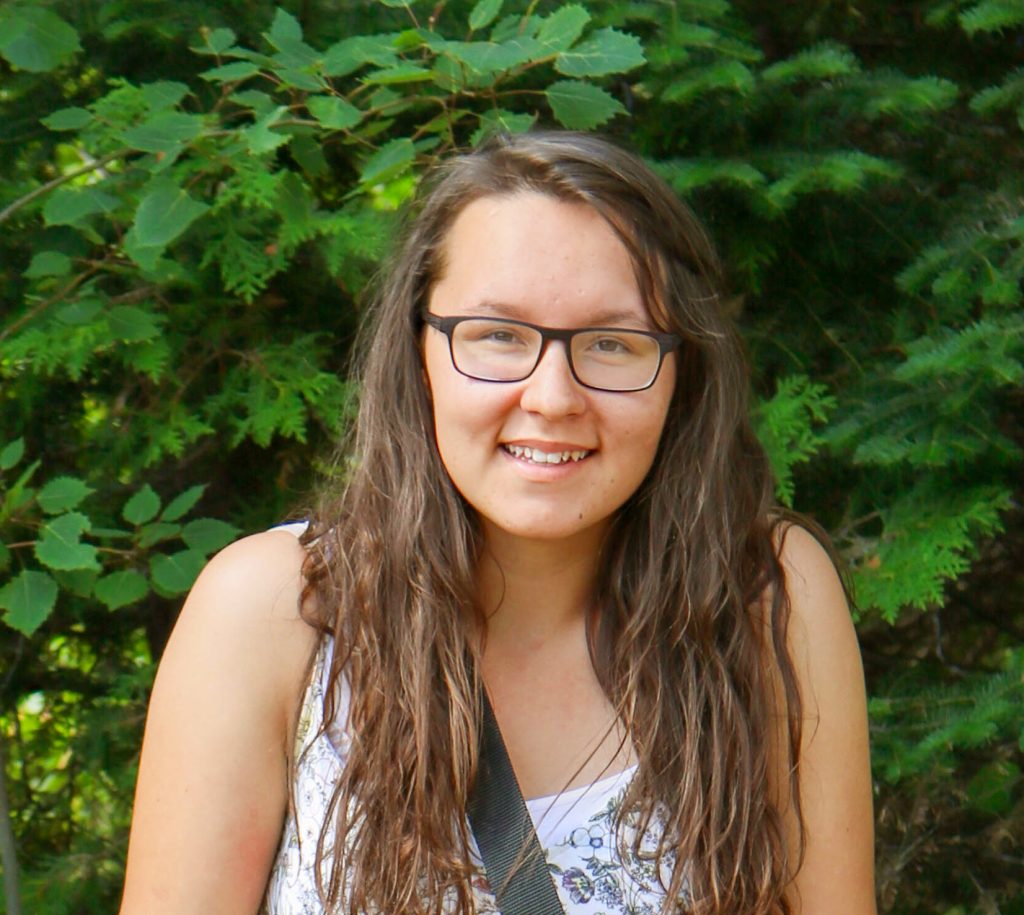 |
Mariah MeawasigeMariah (Makoose) is an Anishinaabe/settler and creative from the northern shores of Lake Huron. Her practice specializes in graphic design but questions the bounds of communication through illustration, sculpture, video, and performance. She created the logo for the Wapatah Centre for Indigenous Visual Knowledge and is currently working on the centre’s visual identity. Through her love of stories and storytelling, Mariah’s body of work aims to explore temporalities and place, map memories, and build relationships. Mariah MeawasigeResearch AssistantMariah (Makoose) is an Anishinaabe/settler and creative from the northern... |
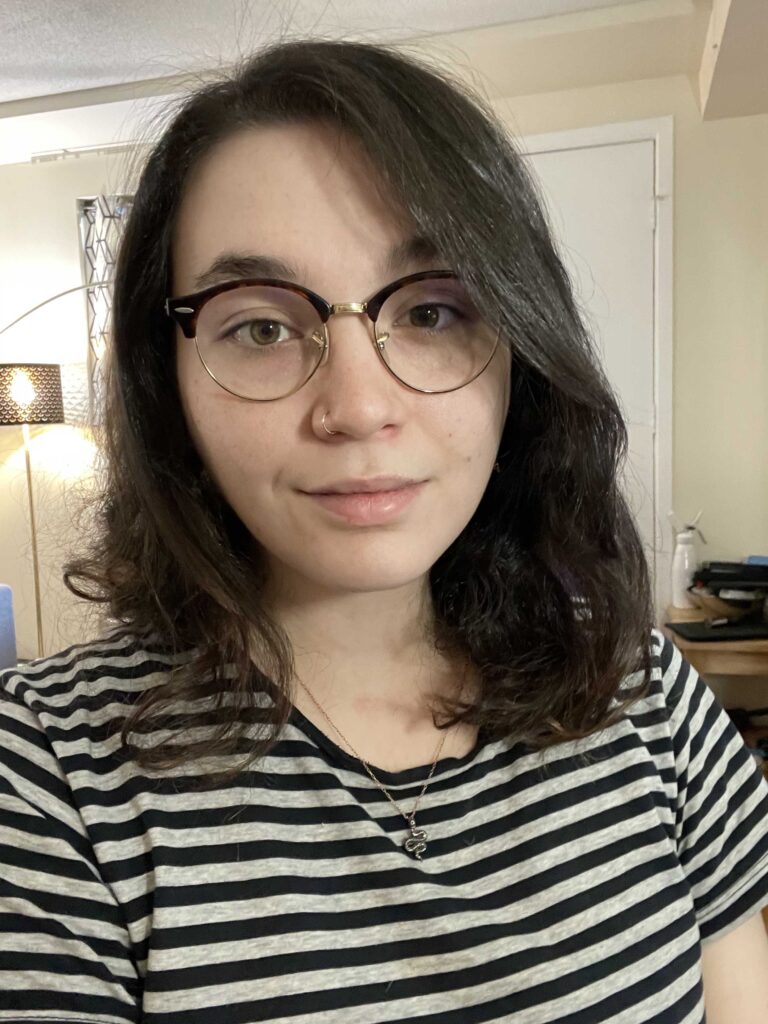 |
Stefania SaraivaStefania Saraiva is currently earning a Master of Arts in Contemporary art, design, and new media at OCAD University. Her research is focused on Latin American art, particularly in relationship to dictatorships and uneven development. She is currently writing a thesis on Venezuelan art in the 1950s and 1960s. At Wapatah, Stefania is working as a research assistant to Gerald McMaster for the Arctic/Amazon project. Stefania SaraivaResearch AssistantStefania Saraiva is currently earning a Master of Arts in... |
